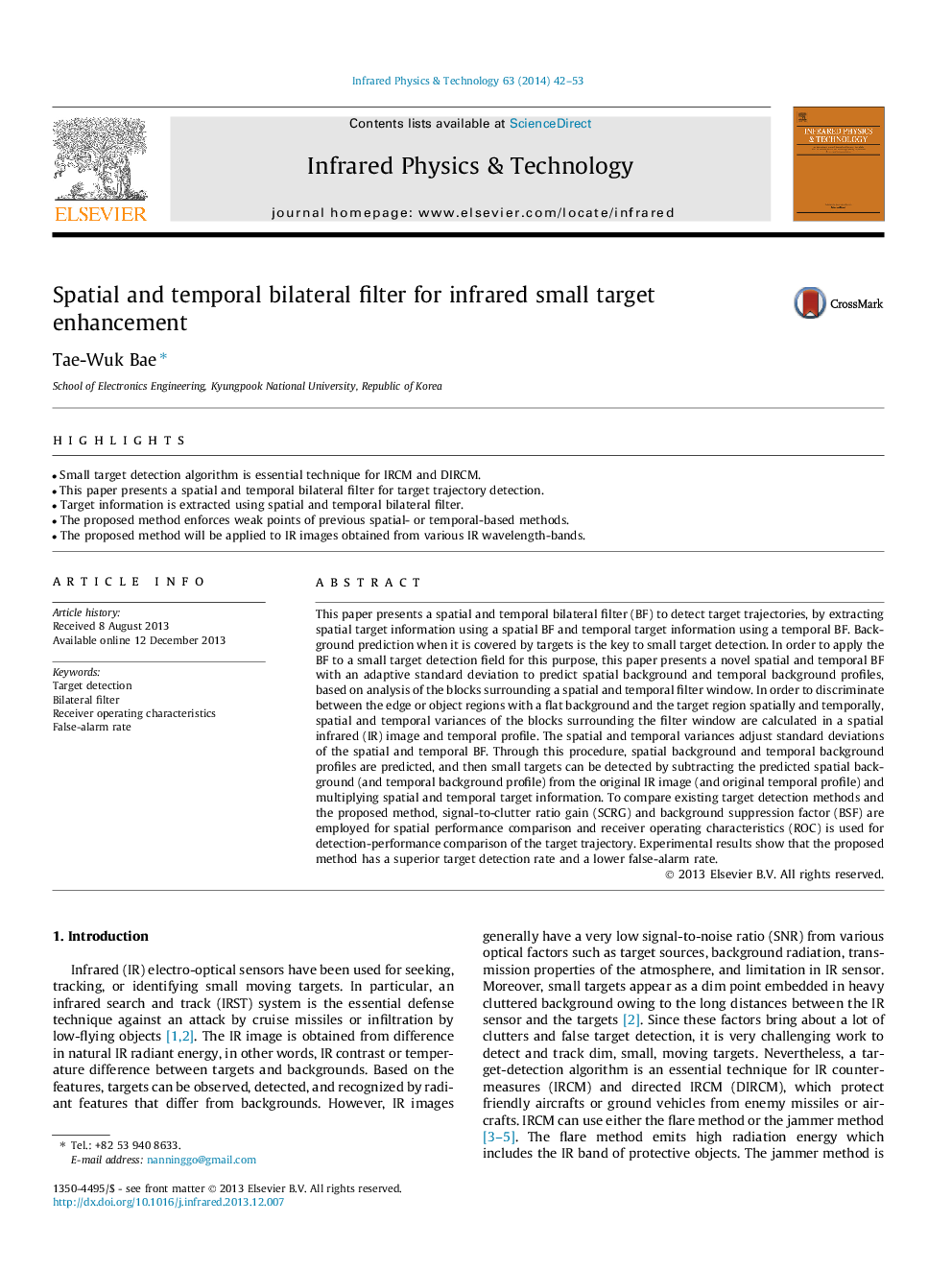| Article ID | Journal | Published Year | Pages | File Type |
|---|---|---|---|---|
| 1784157 | Infrared Physics & Technology | 2014 | 12 Pages |
•Small target detection algorithm is essential technique for IRCM and DIRCM.•This paper presents a spatial and temporal bilateral filter for target trajectory detection.•Target information is extracted using spatial and temporal bilateral filter.•The proposed method enforces weak points of previous spatial- or temporal-based methods.•The proposed method will be applied to IR images obtained from various IR wavelength-bands.
This paper presents a spatial and temporal bilateral filter (BF) to detect target trajectories, by extracting spatial target information using a spatial BF and temporal target information using a temporal BF. Background prediction when it is covered by targets is the key to small target detection. In order to apply the BF to a small target detection field for this purpose, this paper presents a novel spatial and temporal BF with an adaptive standard deviation to predict spatial background and temporal background profiles, based on analysis of the blocks surrounding a spatial and temporal filter window. In order to discriminate between the edge or object regions with a flat background and the target region spatially and temporally, spatial and temporal variances of the blocks surrounding the filter window are calculated in a spatial infrared (IR) image and temporal profile. The spatial and temporal variances adjust standard deviations of the spatial and temporal BF. Through this procedure, spatial background and temporal background profiles are predicted, and then small targets can be detected by subtracting the predicted spatial background (and temporal background profile) from the original IR image (and original temporal profile) and multiplying spatial and temporal target information. To compare existing target detection methods and the proposed method, signal-to-clutter ratio gain (SCRG) and background suppression factor (BSF) are employed for spatial performance comparison and receiver operating characteristics (ROC) is used for detection-performance comparison of the target trajectory. Experimental results show that the proposed method has a superior target detection rate and a lower false-alarm rate.
